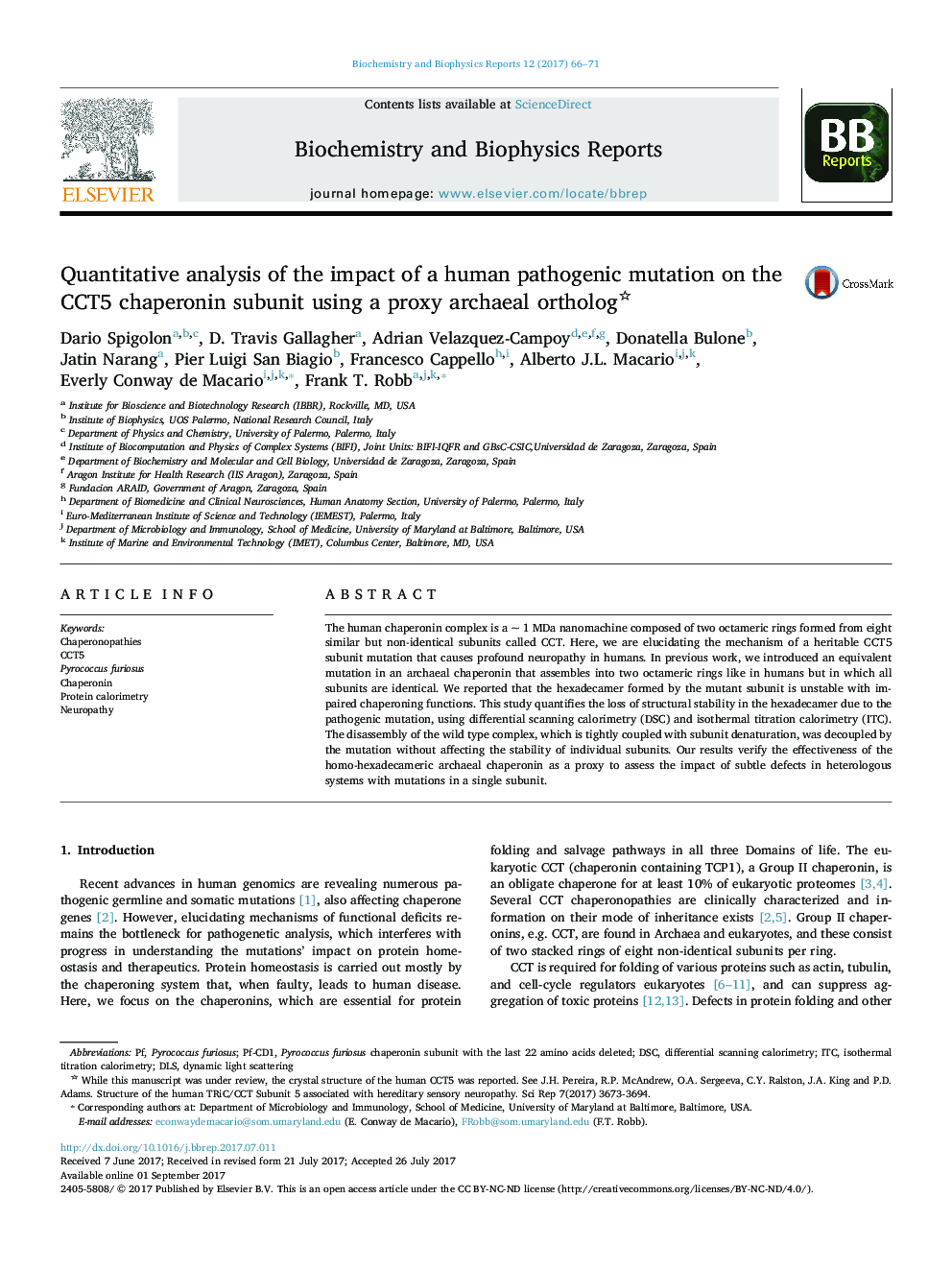| Article ID | Journal | Published Year | Pages | File Type |
|---|---|---|---|---|
| 5506967 | Biochemistry and Biophysics Reports | 2017 | 6 Pages |
â¢A crippling hereditary neuropathy was addressed at the molecular level.â¢The archaeal/CCT5 model represents a promising testbed for subtle defects.â¢The homomeric archaeal model amplifies the effect of the mutation.â¢The mutation decouples assembly without destabilizing individual subunits.
The human chaperonin complex is a ~ 1Â MDa nanomachine composed of two octameric rings formed from eight similar but non-identical subunits called CCT. Here, we are elucidating the mechanism of a heritable CCT5 subunit mutation that causes profound neuropathy in humans. In previous work, we introduced an equivalent mutation in an archaeal chaperonin that assembles into two octameric rings like in humans but in which all subunits are identical. We reported that the hexadecamer formed by the mutant subunit is unstable with impaired chaperoning functions. This study quantifies the loss of structural stability in the hexadecamer due to the pathogenic mutation, using differential scanning calorimetry (DSC) and isothermal titration calorimetry (ITC). The disassembly of the wild type complex, which is tightly coupled with subunit denaturation, was decoupled by the mutation without affecting the stability of individual subunits. Our results verify the effectiveness of the homo-hexadecameric archaeal chaperonin as a proxy to assess the impact of subtle defects in heterologous systems with mutations in a single subunit.
Graphical abstractDownload high-res image (200KB)Download full-size image
